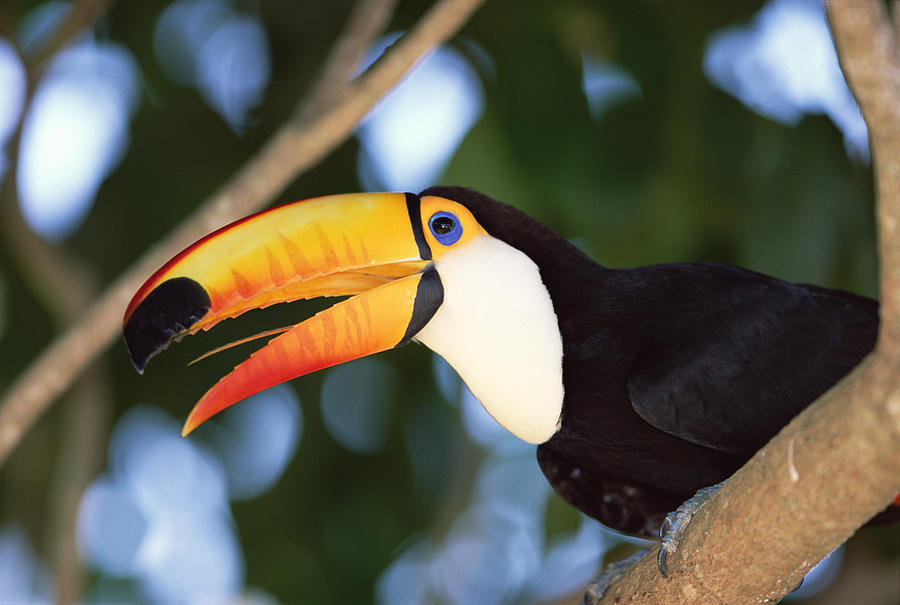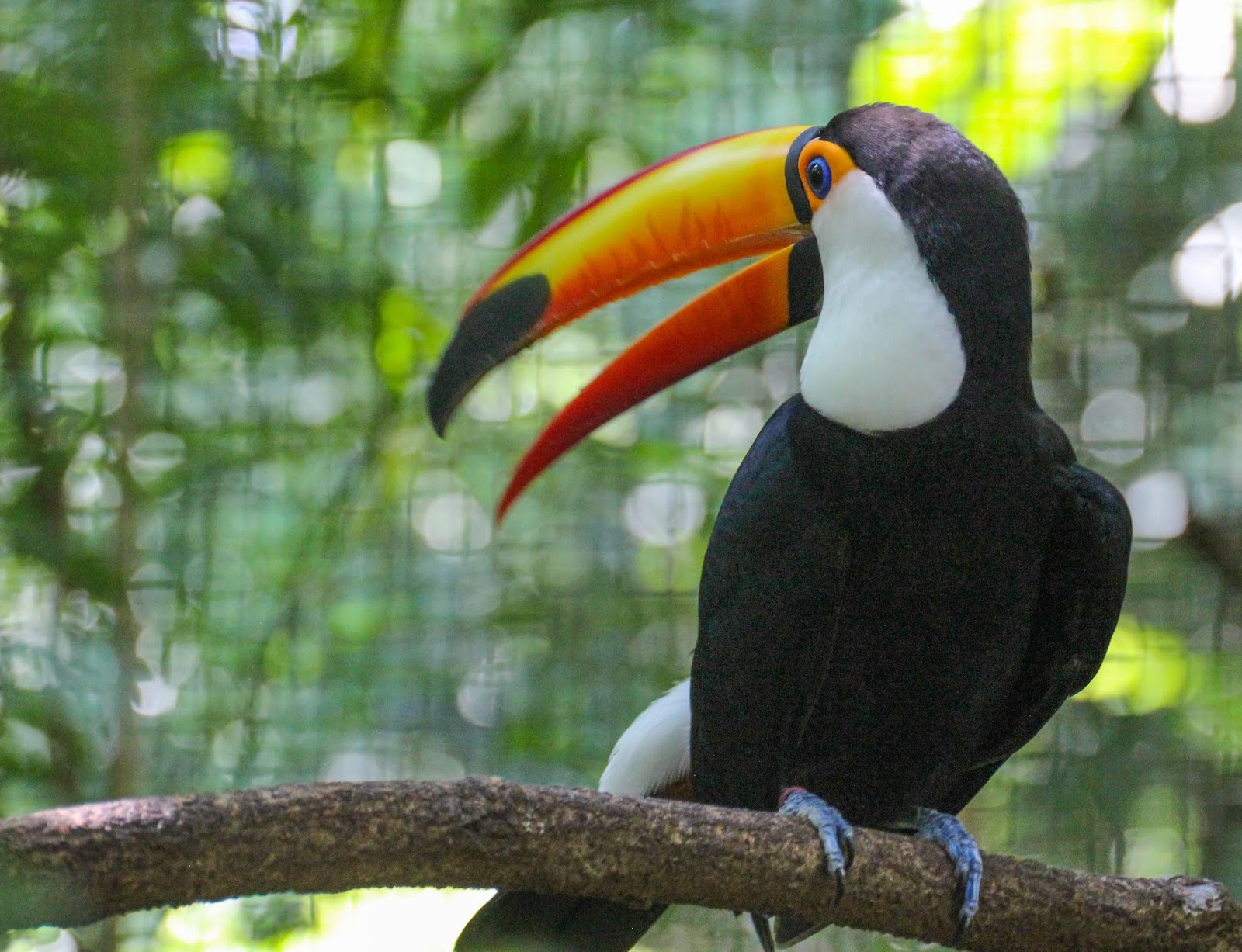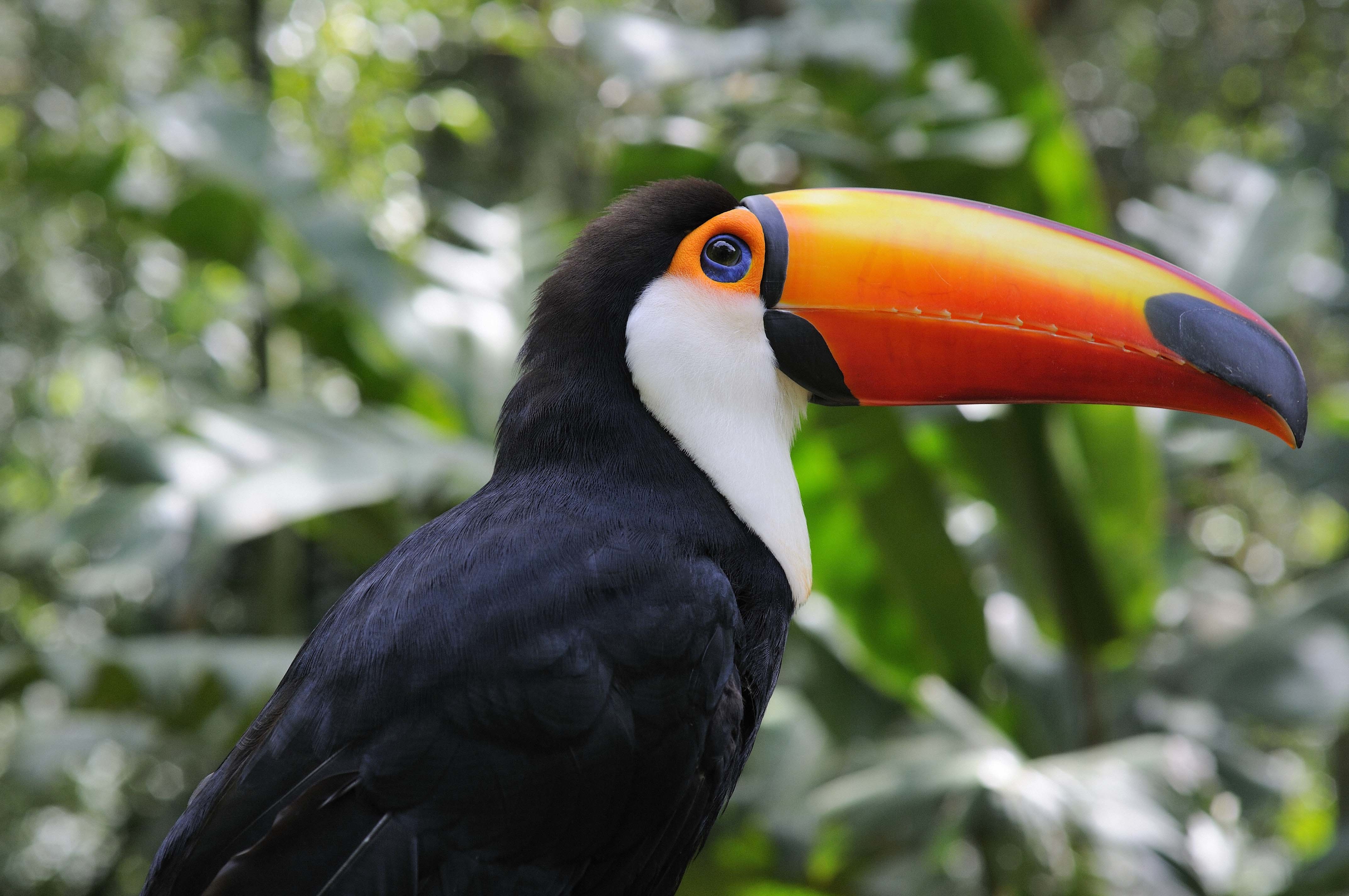
Most toco toucans live in Central America or the eastern part of South American. Females are smaller in size than the males but the coloring is the same. The toco weighs from 1.1 pounds all the way up to almost 2 pounds. It also uses its tongue to toss food into its mouth. Like other toucans, the toco has a long, powerful tongue that it uses to catch lizards and insects. Due to the brightly colored flowers of the tropics the beak works as camouflage. This is the same way an elephant’s large ears work to regulate its body temperature.Īnother function of the beak is to help the toco toucan blend into its surroundings. Restricting the flow keeps the bird warm. The blood flowing through the beak releases heat and keeps the toucan cool. The beak also works as a type of built-in air-conditioning. The large size of the beak can help intimidate predators though it doesn’t really work as a defense weapon.
:max_bytes(150000):strip_icc()/toco-toucan-eating-fruit-828852812-3f039f14a87f43d3972ee93249706cfc.jpg)
It works like a set of tongs to pick up the fruit and then to peel it. They help the birds reach for fruit from a distance. The beaks of the toco are not only beautiful but serve a variety of functions.

This allows the toucan to fly short distances which it could not do if the beak was heavy. Though the beak appears heavy it is made mostly of keratin and air around a frame of hollow bones making it extremely light. The color of the beak is mostly orange with a large black tip on the end. The most notable feature is the toco’s large, colorful beak which ranges in size from six to nine inches. The eyes appear to be blue but are actually covered in a blue skin. The plumage of the toco toucan includes a black body, white chest, and a ring of red around the eyes. A toucan’s tongue is long, narrow, and singularly frayed on each side, adding to its sensitivity as an organ of taste. The neck is short and thick, and at the base of the head is a huge, brightly-colored beak that measures, in some large species, more than half the length of the body.

The tail is rounded, and varies in length from half the length to the whole length of the body. Their bodies are short (of comparable size to a crow’s) and thick. Toucans range in size from the Lettered Aracari (Pteroglossus inscriptus), at 130 g (4.6 oz) and 29 cm (11.5 inches), to the Toco Toucan (Ramphastos toco), at 680 g (1.5 lbs) and 63 cm (25 inches). The family includes six genera and about forty different species. They are brightly marked and have enormous, colorful bills. They also eat lizards, frogs and other small invertebrates.Toucans are near passerine birds from the neotropics. While toucans are cute and funny, they are not harmless and have a reputation for raiding other birds’ nests and eating their eggs and nestlings. Like many other tropical birds, toucans play a crucial role in the tropical ecosystem by dispersing the seeds of fruit trees. While fruits make up the staple of their diet, they also depend on insects for dietary protein and are opportunistic predators, eating lizards, small birds and eggs. Toucans, toucanets and araçaris are omnivorous. Toucans are tropical birds that dwell in the forests and mountains regions of Central and South America, but here we’re going to answer what do toucans eat?

The most well-known toucan is undoubtedly the Toco toucan, famed for its colossal bright orange bill. The toucan family Ramphastidae contains 40 different species, including the araçaris and toucanets.


 0 kommentar(er)
0 kommentar(er)
